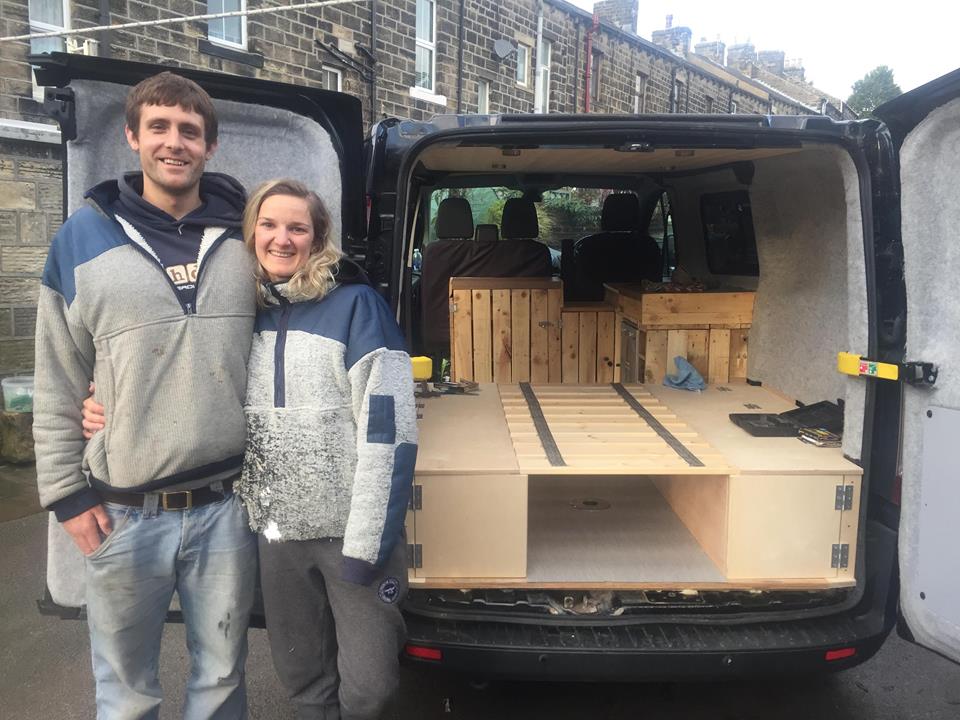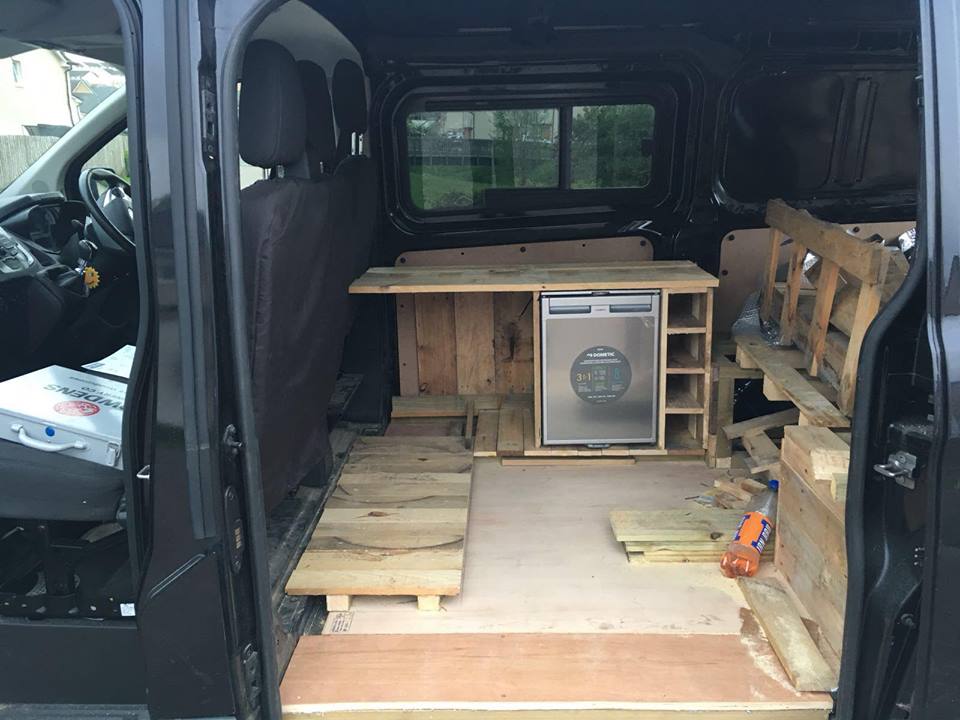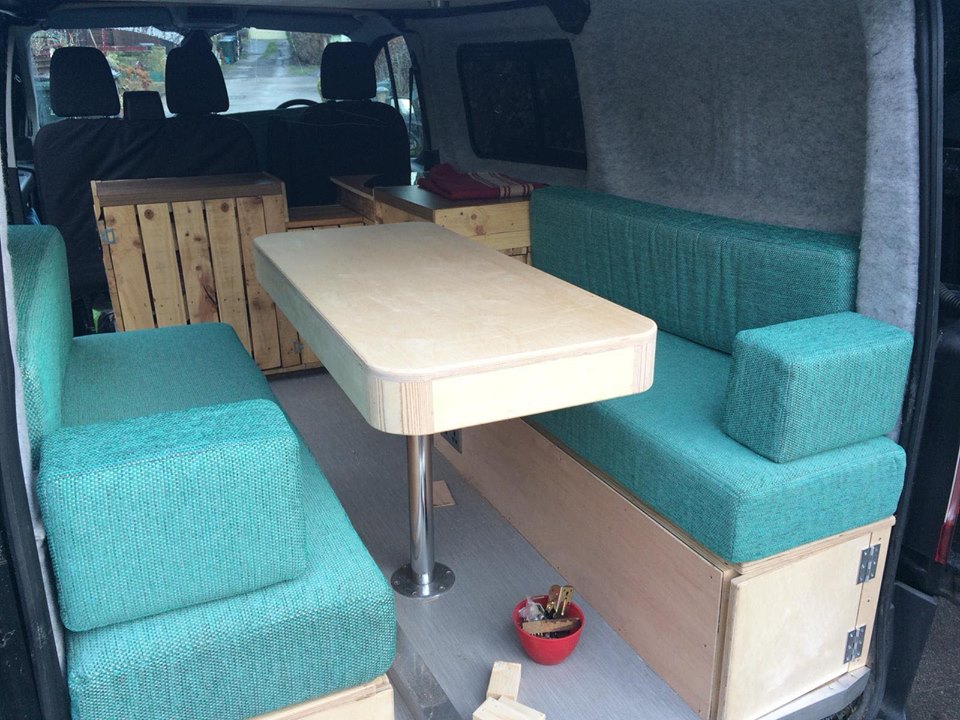
MEANDERING up Ireland’s west coast, photographer Colin Stafford-Johnstone mused recently: “You can’t get lost if you don’t have a destination and you can’t be late if you don’t have a timetable.”
It’s a Utopian ethos to many and one that aptly applies to the ever increasing world of travel and a well-known subset within that – campervanning. A world where your destination is as far or as near as you like and the normal morning, afternoon and night don’t jig to the regular tunes of 24-hour rhythm as your sleeping patterns become more and more linked to the sun’s rising and setting.
It’s not news campervanning and caravanning themselves have been on the rise – the National Caravan Council reported an increase of 13.7% in production last year and The Caravan and Motorhome Club is seeing a significant increase in the number of campervanners becoming members – but there’s another faction of campervan enthusiasts now trundling down the open road: Those making their own vans from scratch.
With thousands of YouTube videos the only manual you’ll ever need in producing your very own campervan and with millions of views a piece, doing-it-yourself has never been so easy, or popular.
#vanlife on Instagram has over 4.5 million posts and accounts like project.vanlife promoting DIY and converted campers boast just shy of a million followers.
And the trend is coming to Scotland. Businesses like Cookie Camperz in Dunoon are blossoming thanks to the increasing popularity of quirky and unique campervan interiors made by hands, not machines. Owners Rebecca Coulthard and Graham Farrar have made a real success of renting and selling on vans they’ve either converted or made from scratch.
Rebecca believes the allure of a converted camper is a lot to do with a lower price, but also the uniqueness and feelings of ‘one of a kind’ DIY campervans produce.
“We love restoring campervans because it’s like bringing something back to life,” said Rebecca.
“A lot of the vans we work on have been left forgotten or unused and it gives them a second wind.
“Often people can’t afford to buy a brand new factory fitted camper vans and this is an opportunity for those to still enjoy the experience whilst not breaking the bank, as well as creating something you’re not afraid to add personal touches to.”
For Laura Alderman from Edinburgh, the cost of making her own van outweighed the benefits of buying new.
“We decided to make our own because it was a challenge and much cheaper. And also to see if it was actually possible. It was and we’re so proud we made it from scratch.
“Ours was pretty DIY and no frills but my favourite bit was the pull out stove and the rain cover.
“The rain cover just gave us more space and privacy but it was literally made from a tarpaulin and tent poles!
https://www.instagram.com/p/BUeqK__gVC0/
“If I did it again id buy a bigger van that you could stand up in, because our style only really worked in warm weather where we could essentially live outside.”
For Eilidh Menzies who lives in Aberdeen, her love of DIY campervanning began when she moved to Australia and bought a battered old Mitsibishi Express. And when she returned to Scotland, the bug hadn’t left.
“I did consider buying a pre-converted or off the production line van but they always had something I didn’t like or wanted to change,” she said.
“And having had a van in Australia I already had an idea of how I’d want my van design to be.
“The beauty of doing it yourself is it can be as easy or complicated as you like. If you just want to chuck a mattress in the back with a wee camp stove then its super easy. But with the help of thousands of YouTube videos and talented friends you can make a proper little home from home.
“You can have all the bits you like from other designs built into your van so get exactly what you want.
“We have a leisure battery that runs lights and a fridge and charges off the car battery when it’s running or can be hooked up to electrics at a campsite. A seating area which folds to a bed and a wee kitchen unit area with a gas cooker.
“Having the freedom of van life is amazing. You don’t need to really plan anything – just get in, drive and when you find somewhere you like park up and stay. Our van still looks like a Ford Transit from the outside so it’s quite stealthy meaning we can stay almost anywhere.
“When you have a van, home is where you park it.”

Enjoy the convenience of having The Sunday Post delivered as a digital ePaper straight to your smartphone, tablet or computer.
Subscribe for only £5.49 a month and enjoy all the benefits of the printed paper as a digital replica.
Subscribe (@cool.cn)
(@cool.cn)

